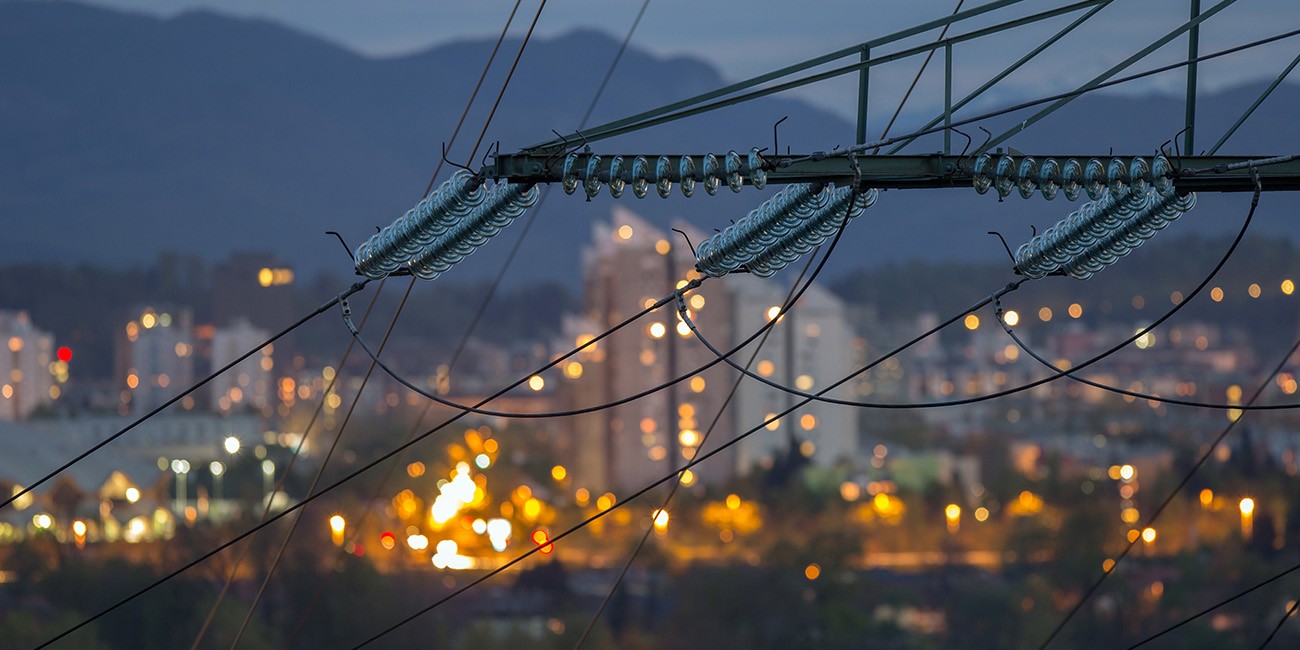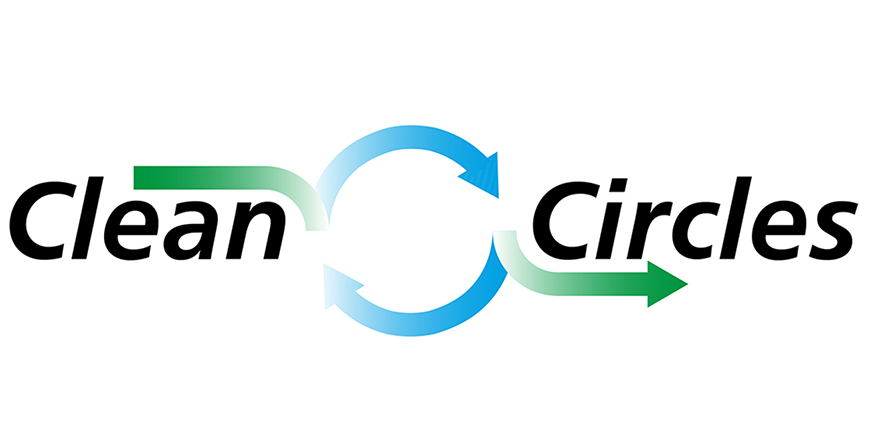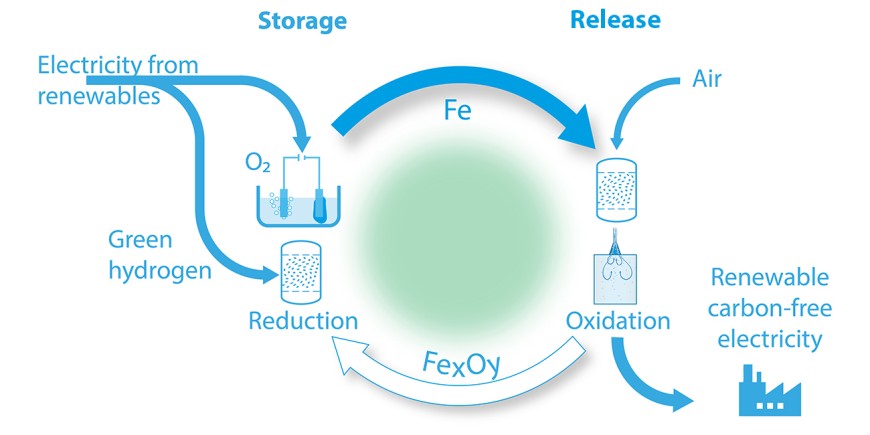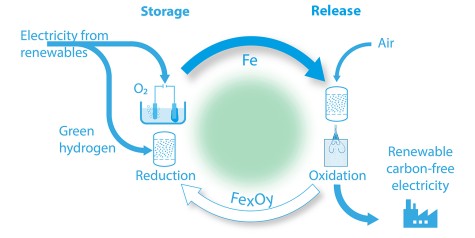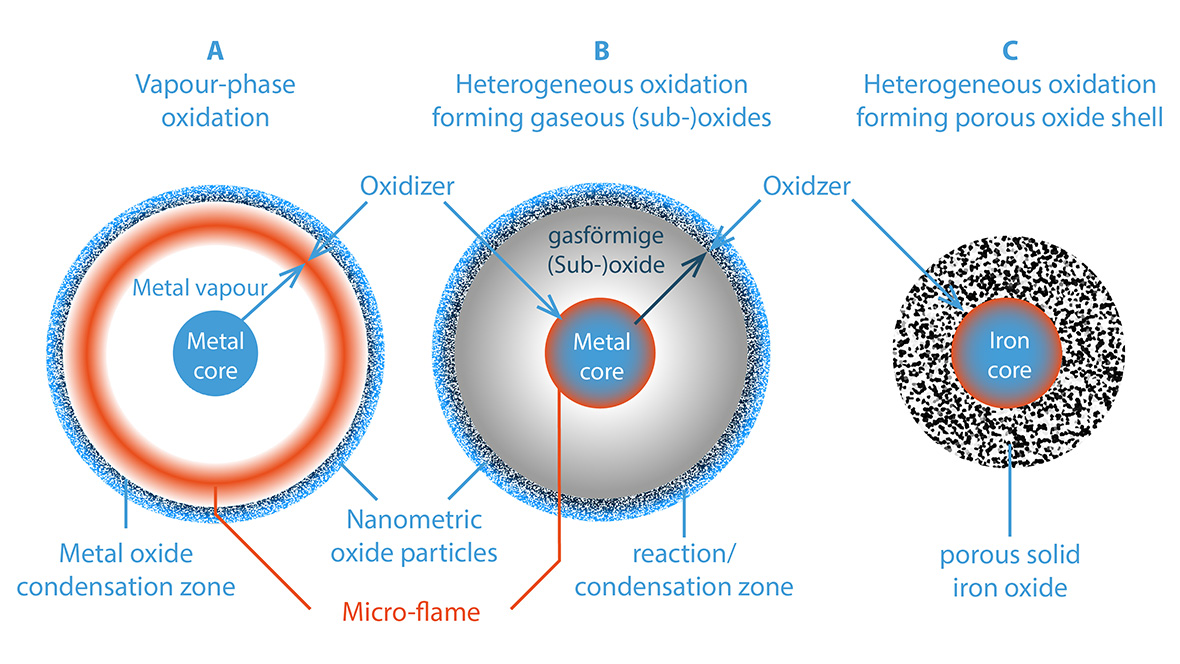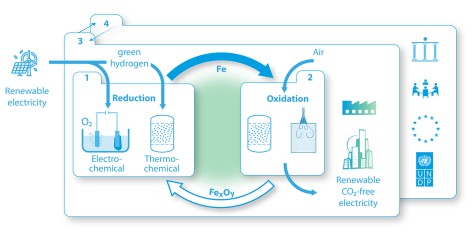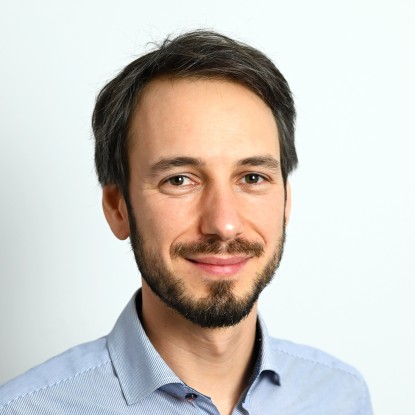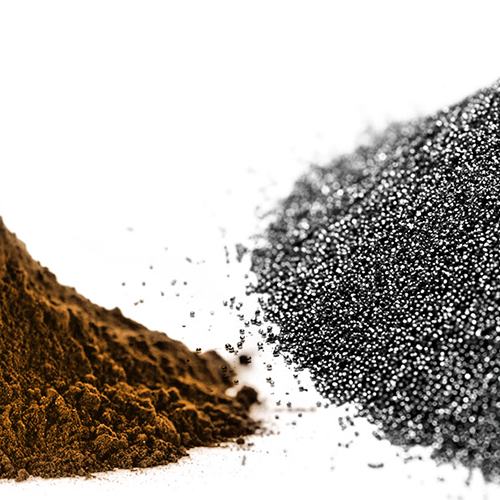
How is that going to work?
Electricity from renewables is used to reduce iron oxide (storage). At a different place and time, the iron is oxidized again to take out thermal energy for electricity generation (release). In this way, renewable energy is stored in large quantities, transported and made available free of CO2 – an unsolved challenge of the energy transition in the face of changing political conditions.
Energy can be stored in iron directly by electrochemical reduction or by using green hydrogen in a thermochemical reduction. The chemical energy is released again with high power densities via high-temperature thermochemical oxidation and reconverted into electricty in thermal power stations. Iron is a carbon-free energy carrier. Thus, the release will not emit carbon dioxide as greenhouse gas. Well packed, iron can be stored for long periods of time. This makes iron a chemical energy carrier to guarantee the supply by controllable power station capacities.
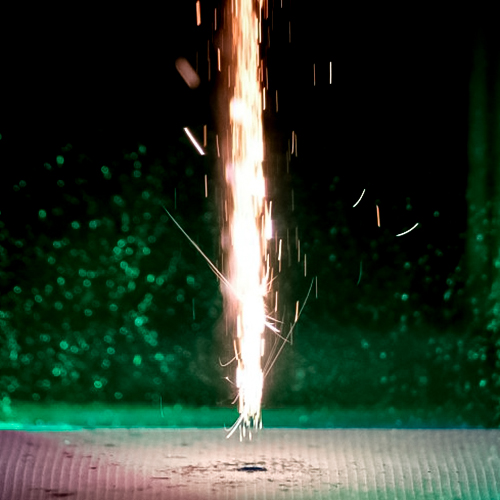
Why iron?
Iron as an energy carrier has excellent physico-chemical properties regarding transport, storage and energetic utilization. Sites inside and outside Germany with high wind and sunshine potential can be integrated into a cost-effective production of renewable electric power in a carbon-free circulatory energy economy.
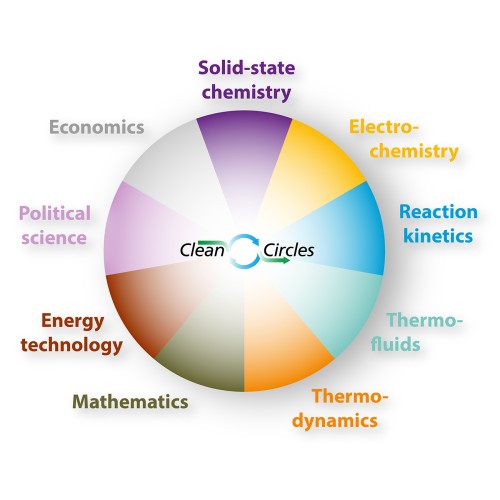
Transdisciplinary approach
Realizable solutions of the iron cycle must take into account the close coupling of engineering, natural, political and economic science issues. Therefore, Clean Circles unites the expertise of scientiscts from nine disciplines: Solid-state chemistry, electrochemistry, reaction kinetics, thermofluids, thermodynamics, mathematics, energy technology, political science and economics.
The collaborative project Clean Circles comprises four interconnected and closely coupled research areas:
1 Reduction Processes
Renewable Energy Storage by Reduction of Iron Oxides: Investigation of new innovative iron oxide reduction processes based on electrolysis (electrochemical) and in fluidized beds with green hydrogen (thermochemical).
2 Oxidation Processes
Renewable Energy Release by Iron Oxidation: Investigation of oxidation processes (thermochemical) of iron and iron oxide particles at different oxidation levels under a wide variety of process conditions.
3 Thermodynamic-mathematical Analysis
Thermodynamic-mathematical and Techno-economic Analysis of Iron Cycles: Mathematical models of the entire iron cycle for energetic, exergetic and exergoeconomic analysis as well as optimization and evaluation of scenarios. Coordination with Research Area 4 on economic and political boundary conditions.
4 Socio-economic Modelling
Governing of Innovations and Socio-economic Modelling: Strategies for political sector coupling and analysis of innovation processes. Identification of funding schemes in energy, structural and mirgation policy to establish new technologies based on the model from Research Area 3.
Funding


